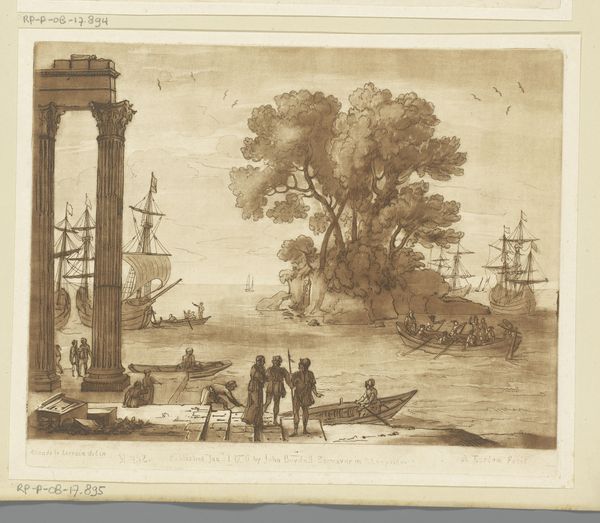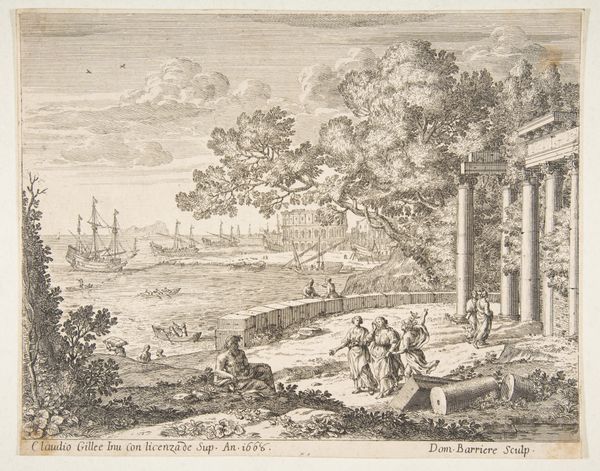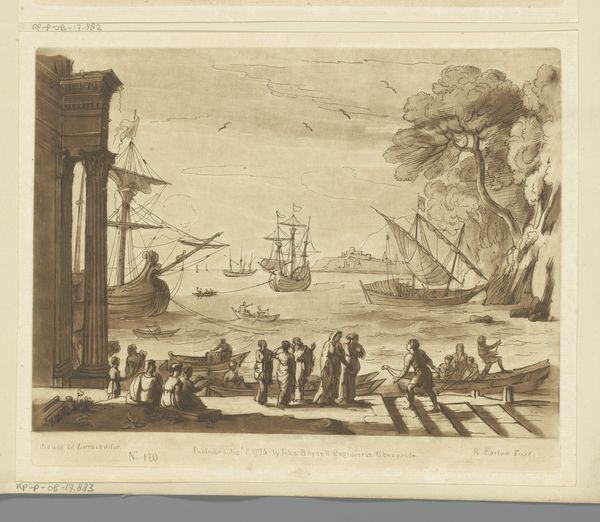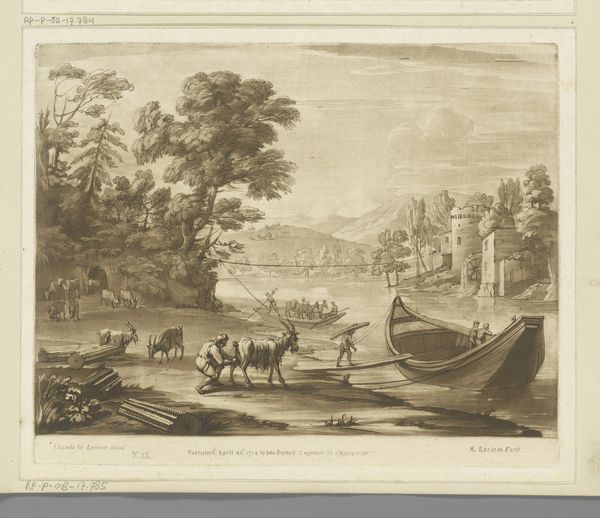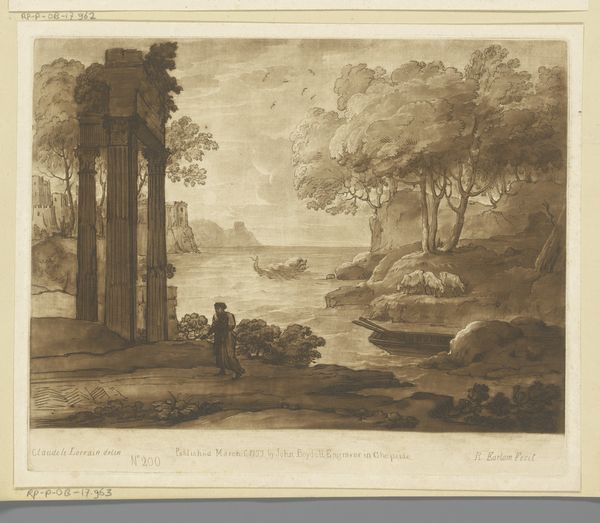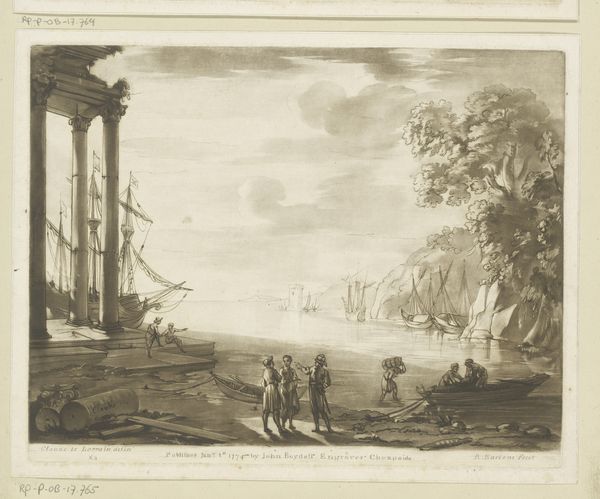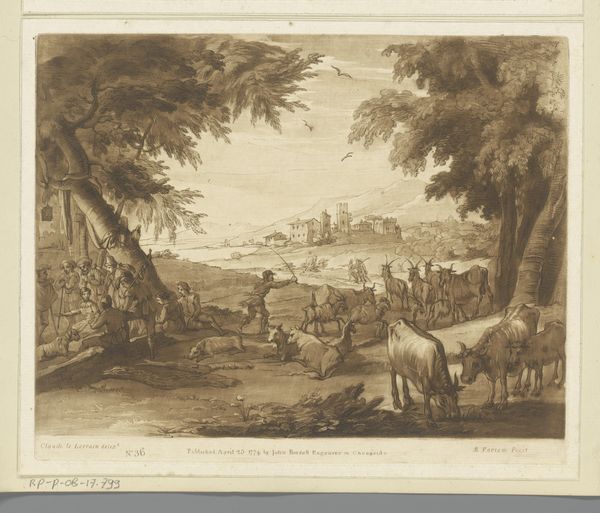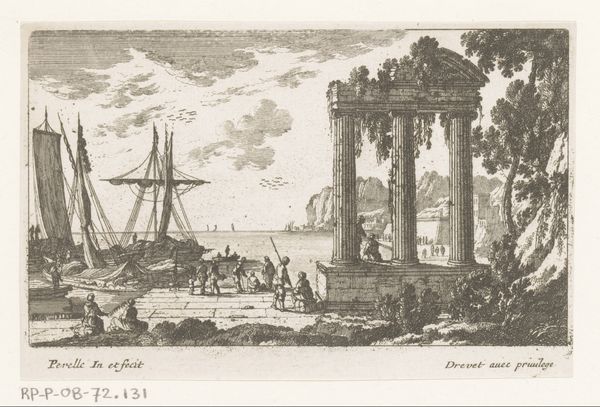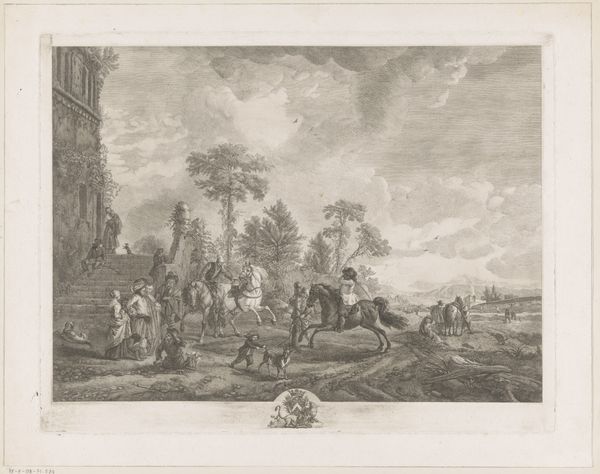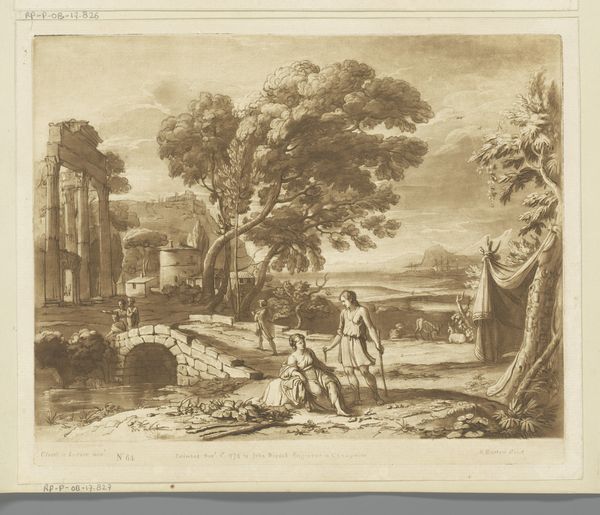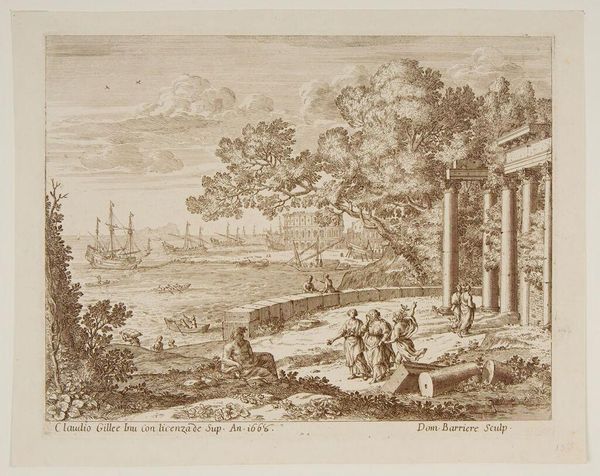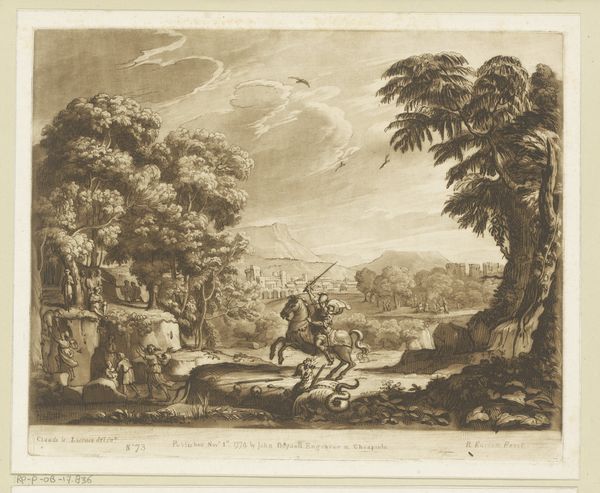
Dimensions: height 207 mm, width 257 mm
Copyright: Rijks Museum: Open Domain
Editor: So this print, "Kustlandschap met Mercurius, Herse en Aglauros," possibly from 1774 by Richard Earlom, shows a coastal scene with ships and classical ruins. It’s interesting how he merges these everyday figures with this ancient mythological scene. How do you interpret the choice to depict a classical narrative in what seems like a very contemporary landscape? Curator: It's crucial to understand that the 18th century saw a renewed fascination with classical antiquity, fueled by archaeological discoveries and a desire to emulate the perceived order and harmony of the ancient world. But more than just imitation, Earlom uses the classical narrative as a lens through which to examine contemporary social and political concerns. The story of Mercury, Herse, and Aglauros is one of desire, jealousy, and transformation. Doesn’t the composition with the foreground figures so close to us pull us in? Editor: Absolutely. The foreground figures do make the scene feel immediate. What kind of commentary might Earlom be offering through this juxtaposition? Curator: Well, think about the societal structures in place at the time. The burgeoning merchant class, the colonial ambitions, and the restrictions placed on women. The narrative of the mythological figures interacting with what appears to be common people could suggest a commentary on social mobility, wealth, and perhaps even the disruption of traditional hierarchies by economic forces. Mercury's journey relates to how society moved around, in their roles and functions. Does this connection seem evident to you? Editor: That's fascinating; I hadn’t considered that connection between social disruption and the classical myth. The ships, of course, then also tie into this broader narrative of movement and exchange. Curator: Exactly! And even further: are those ships traders or warships? These questions are very much alive within this image and we shouldn't take a single item for granted. Editor: Seeing how the social context seeps into what appears like a formal landscape reveals so much more to the engraving! Curator: Indeed, that historical context reframes our reading, making it possible to extract additional narrative, transforming a pleasing vista into an appeal for viewers of the present and future.
Comments
No comments
Be the first to comment and join the conversation on the ultimate creative platform.
